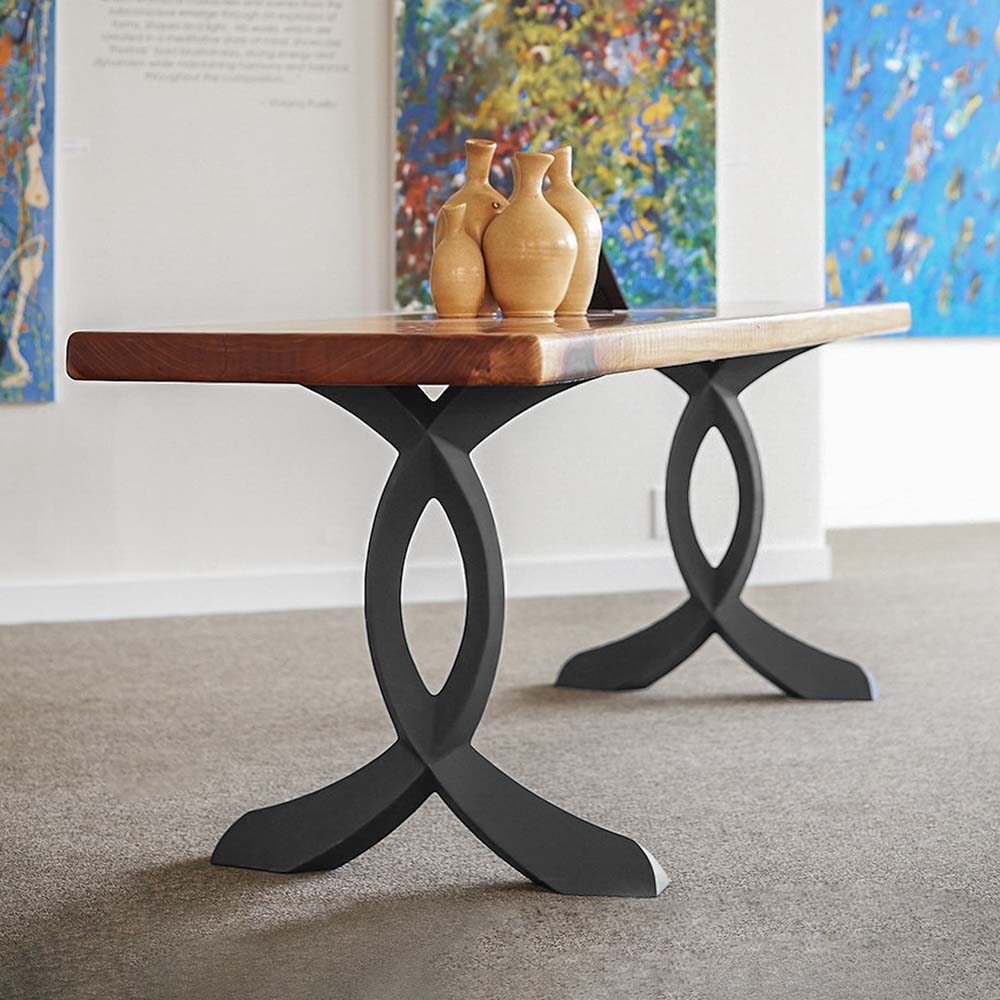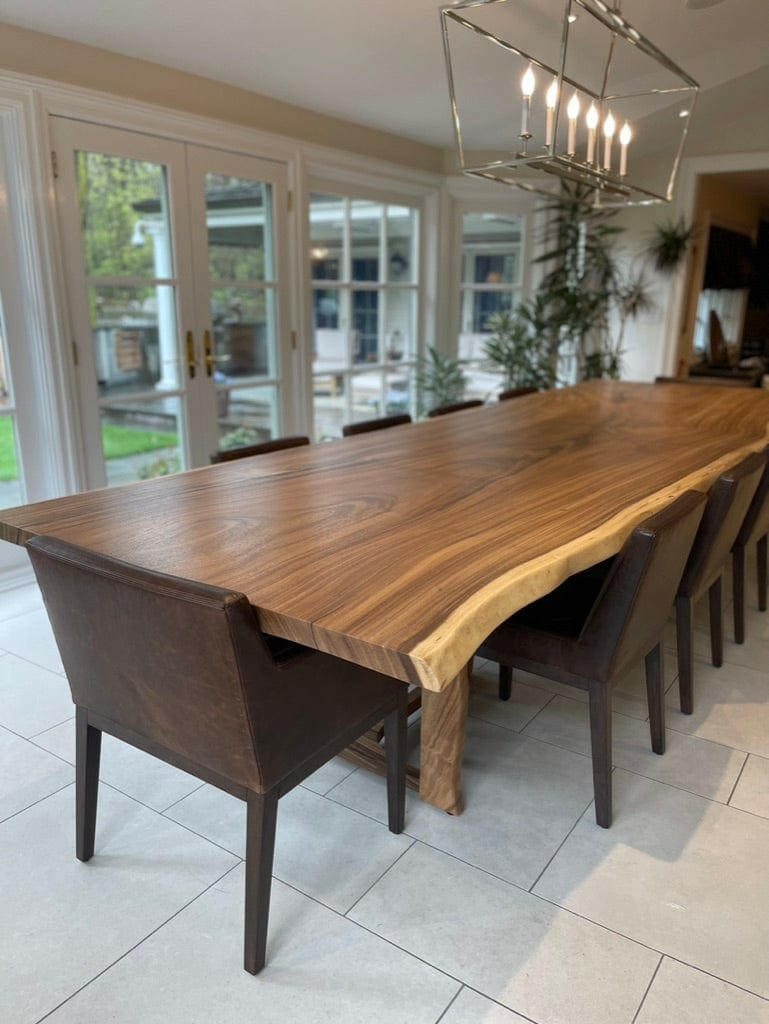Picking the Perfect Table: What Styles Job Best for Your Home?
Selecting the suitable eating table for your home can be a nuanced process that balances appearances and functionality. To navigate these options properly and locate a table that truly matches your home, think about the adhering to facets in detail.
Evaluating Your Area
Examining the measurements and format of your eating location is an essential initial step in picking the perfect table. Begin by measuring the length and width of the room, representing doorways, windows, and other architectural functions that might influence table placement. This guarantees that your table not only fits however also enables comfortable movement around it.
Consider the number of individuals you typically entertain. A table should accommodate your household's day-to-day demands while using adequate versatility for occasional guests. Generally of thumb, allocate at the very least 24 inches of table size each to make sure a comfortable dining experience.
It's additionally crucial to keep proper clearance around the table. Ideally, there should go to the very least 36 inches between the table edge and wall surfaces or various other furniture, enabling very easy gain access to and movement. For rooms where chairs with arms or added storage units like buffets are entailed, boosting this clearance to 48 inches is recommended.
Lighting and ambience play considerable roles. Make certain that your dining table aligns with existing lights fixtures or plan for sufficient illumination remedies. This detailed spatial assessment guarantees that your table not only fits literally but additionally harmonizes with your area's overall capability and aesthetic.
Popular Table Styles

Conventional dining tables typically feature ornate details, curved legs, and rich timber coatings, stimulating a sense of timeless elegance. They are excellent for homes with timeless decoration or those seeking to add a touch of sophistication to their eating location.
Modern dining tables prioritize simpleness and tidy lines, typically including materials like glass and steel. These tables are suitable for contemporary spaces, giving a streamlined and clean look that enhances minimalist design ideologies.
Rustic table, on the other hand, stress natural products and a handcrafted appearance - dining room table legs. They usually feature reclaimed timber and a distressed coating, producing a cozy and inviting atmosphere. These tables function well in farmhouse-style homes or those seeking a relaxing, organic feeling
Industrial dining tables incorporate resources such as steel and wood, usually showcasing a practical visual. This style is fit for lofts or city areas, including a touch of rugged beauty and sturdiness to the eating experience.
Each style supplies distinct benefits, making it necessary to pick one that aligns with your home's general layout and your personal choices.
Material Options
When picking a dining table, the option of product plays an essential duty in determining both the table's looks and functionality. Wood, steel, glass, and composite products each offer distinct advantages and obstacles, making it necessary to straighten the material with your home's design and way of living demands.
Wood is an ageless and flexible alternative, available in selections such as oak, walnut, and mahogany. Recognized for its longevity and heat, wood complements both conventional and contemporary insides. Nevertheless, it needs normal upkeep to stop scratches and warping.
Steel tables, frequently crafted from stainless steel, aluminum, or wrought iron, are applauded for their contemporary charm and toughness. They are specifically matched for commercial or minimal setups however can be susceptible to dents and may feel chilly to the touch.
Glass dining tables bring an air of beauty and openness, ideal for smaller spaces as they create an impression of even more area. While simple to tidy, glass can be vulnerable to smudges and requires careful handling to avoid chips and splits.
Composite products, such as MDF and plywood, deal economical and adjustable services, learn the facts here now though they may do not have the long life of natural materials. Selecting the right product guarantees your dining table is both a functional property and an aesthetic pleasure.
Shape and Dimension Factors To Consider
After figuring out the suitable material for your table, the next consideration is picking the ideal sizes and shape to fit your space. The form of the table substantially influences the room's visual and functionality. Rectangle-shaped tables, one of the most common form, are optimal for larger rooms and can fit a higher variety of guests. They additionally allow for an extra formal eating experience. On the other hand, round tables cultivate a find more info sense of affection and are outstanding for smaller sized dining locations, motivating discussion by getting rid of edges and making everybody really feel equally consisted of.
Dimension is just as vital and should be dictated by both the space's measurements and the number of people you plan to seat routinely. Generally of thumb, allocate at the very least 24 inches of table size each to guarantee comfy eating. Additionally, consider the table's clearance area: there need to go to least 36 inches between the table edge and the wall surfaces or various other furnishings. This ensures that diners can walk around conveniently without feeling cramped. Extending tables use adaptability if you regularly organize bigger gatherings, providing additional seating when needed without occupying additional area daily. Choosing the visit this site ideal sizes and shape makes certain both usefulness and visual consistency in your eating location.
Matching Your Decoration
Choosing a dining table that integrates with your existing decoration is critical in developing a natural and inviting room. Begin by evaluating your current interior decoration style, whether it be modern, standard, rustic, or eclectic. The table ought to enhance the general visual, not take on it. As an example, a smooth, minimalist table with tidy lines is perfect for a modern-day home, while a vintage, elaborate table matches a much more traditional setting.
Shade and product are equally considerable. If your style features warm tones and all-natural products, consider a wooden table to improve the natural feel. On the other hand, a glass or steel table may be better in a space controlled by amazing colors and commercial elements. Focus on the surface, as it ought to mirror various other furnishings and components to keep harmony.
Texture plays a vital role. A rough-hewn, reclaimed wood table can add character to a rustic room, while a polished marble surface can elevate a lavish eating area. Ultimately, think about the range and proportion of the table in regard to the space size and existing furniture. A well-matched table not only boosts visual charm yet also enriches the general eating experience.

Conclusion
Picking the ideal dining table necessitates careful consideration of room, design, products, shape, and size. Typical tables complement timeless interiors with abundant wood finishes, while modern-day tables suit modern settings through glass and metal.